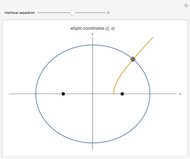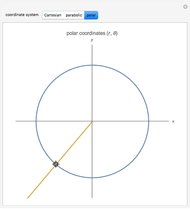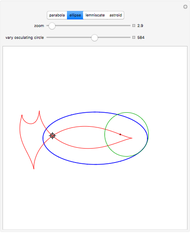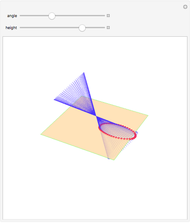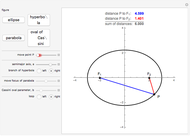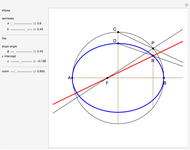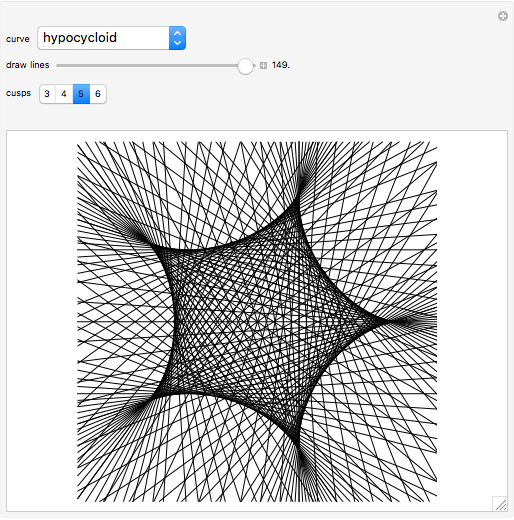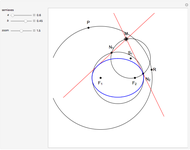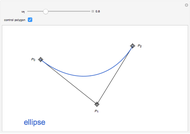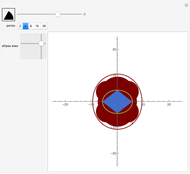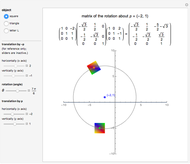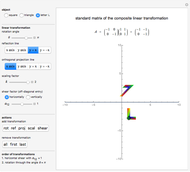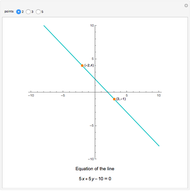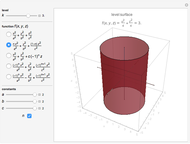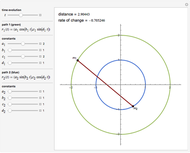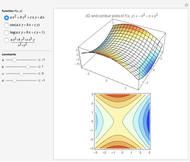Curves through Given Points in the Plane

Requires a Wolfram Notebook System
Interact on desktop, mobile and cloud with the free Wolfram Player or other Wolfram Language products.
In this Demonstration we construct curves through two, three, or five specified points in the plane. The three buttons correspond to a construction of a line through two distinct points, a circle through three distinct points, and a general conic section (ellipse, parabola, or hyperbola) through five distinct points, respectively. In each case, dragging the points, we can obtain degenerate curves by making one or more points coincide.
Contributed by: Ana Moura Santos and João Pedro Pargana (March 2011)
(Instituto Superior Técnico)
Open content licensed under CC BY-NC-SA
Snapshots
Details
We can construct a line through two distinct points ( ) and (
) and ( ) in the plane by considering that both points satisfy the linear equation
) in the plane by considering that both points satisfy the linear equation  , that is, we should have
, that is, we should have  and
and  with coefficients
with coefficients  ,
,  , and
, and  not all zero. Take these three equations together and we obtain a homogeneous linear system of three equations for the unknowns
not all zero. Take these three equations together and we obtain a homogeneous linear system of three equations for the unknowns  ,
,  , and
, and  . Since
. Since  ,
,  , and
, and  are not all zero, the explicit equation for the given line can be written as
are not all zero, the explicit equation for the given line can be written as  .
.
In the case of a circle, three distinct points in a plane determine a curve with quadratic equation  with coefficients
with coefficients  ,
,  ,
,  , and
, and  not all zero. Once more, considering this equation together with the three equations for the distinct points (
not all zero. Once more, considering this equation together with the three equations for the distinct points ( ), (
), ( ) and (
) and ( ), we conclude the explicit equation for the circle as
), we conclude the explicit equation for the circle as  .
.
For a general conic section (ellipse, parabola, or hyperbola), five distinct points determine the curve uniquely. Using the same notation as in Conic Section (Wolfram MathWorld), the general quadratic equation has the form  , with coefficients
, with coefficients  ,
,  ,
,  ,
,  ,
,  , and
, and  not all zero. Similarly to the previous cases of the line and the circle, the explicit equation for the given conic can be obtained by setting the determinant of the
not all zero. Similarly to the previous cases of the line and the circle, the explicit equation for the given conic can be obtained by setting the determinant of the  matrix corresponding to the homogeneous linear system of six equations for the unknowns
matrix corresponding to the homogeneous linear system of six equations for the unknowns  ,
,  ,
,  ,
,  ,
,  , and
, and  , equal to zero.
, equal to zero.
Reference
H. Anton and C. Rorres, Elementary Linear Algebra: Applications Version, New York: John Wiley & Sons, 1994.
Permanent Citation







